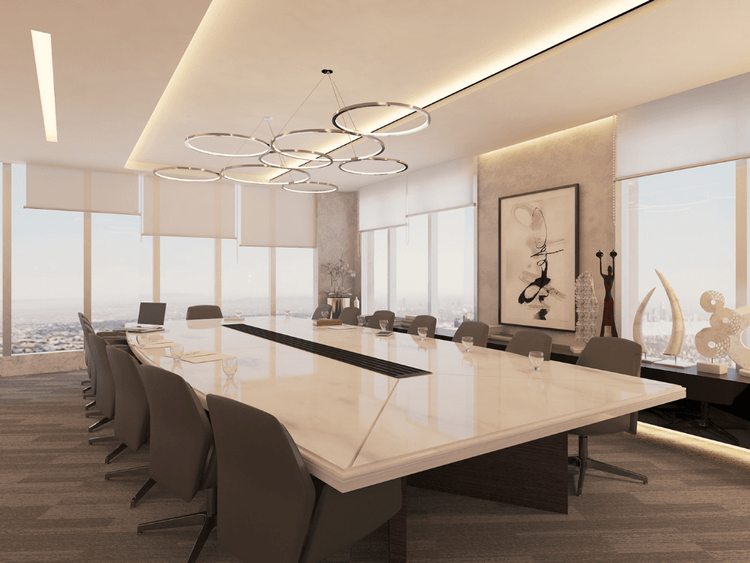The office environment plays a crucial role in shaping employee well-being, productivity, and overall company culture. Every design element, from furniture layout to lighting, contributes to creating an inspiring and functional workspace.
False ceilings are an often overlooked and versatile design element that can significantly enhance the aesthetics, functionality, and overall ambiance of an office, by making the space appear more homely and cozy.
Benefits and Trends
A well done office false ceiling design offers a multitude of benefits that go beyond mere aesthetics. Here are some key advantages:
Improved acoustics: False ceilings can help absorb sound, reducing noise pollution and creating a quieter, more focused work environment. This is particularly beneficial in open-plan offices where sound can easily disrupt concentration and conversations.
Enhanced lighting: False ceilings provide a seamless template for setting up various lighting options, allowing for customized illumination based on specific needs. This can improve task visibility, create different moods and ambiences with various lighting options, and contribute to energy efficiency.
Concealment of mechanical elements: False ceilings effectively hide electrical wiring, HVAC ducts, loose insulation material and other mechanical elements, creating a clean and uncluttered visual experience.
Thermal insulation: Certain false ceiling materials offer thermal insulation and also help to hide loose insulation materials like fiberglass, helping to regulate room temperature and improve energy efficiency, especially in cold areas.
Current trends in office false ceiling design focus on the following aspects of office space design:
Sustainability: Utilizing eco-friendly materials like recycled content or wood from sustainable sources is gaining traction.
Biophilic design: Incorporating natural elements like wood finishes or skylights can foster a connection with nature and improve occupant well-being.
Smart features: Integrating technology like sensors for lighting control or air quality monitoring is becoming increasingly popular.
Materials and Styles
The choice of materials and styles for false ceilings depends on various factors, including budget, desired aesthetics, and functional requirements. Here are some popular options commonly in use today:
Materials:
Mineral fiber: A cost-effective and versatile option, offering good sound absorption. climate insulation and fire resistance.
Metal: Metal is used as a reinforcement material in order to mount the false ceiling to concrete. It can also be used as a designing material. Gold and aluminum foil is often used to add metallic accents to offer a sleek and modern look.
Wood: Wood is often used in the form of thin veneers as an alternative to heavy planks which require heavy reinforcement and regular maintenance. This provides a natural aesthetic and warmth to the room and is largely versatile because wood can be used not only to construct false ceilings but also be used to craft wall panels.
Gypsum board: This is the most common choice, offering fire resistance, insulation and a gritty surface suitable for painting in a wide variety of finishes.
Styles
- Flat panels: This is the most basic and economical option, suitable for creating a clean and minimalist look and is mainly implemented to allow the fitting and furnishing of lighting.
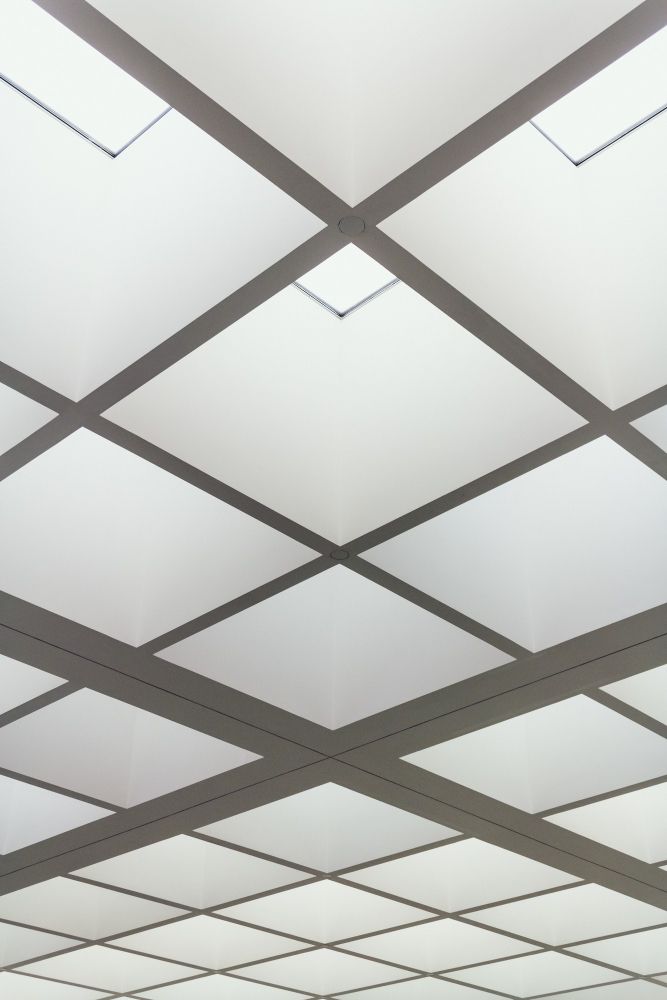
Baffles: Linear panels suspended below the main ceiling, offering visual interest and improved sound absorption.
Clouds: Freestanding ceiling panels hung at varying heights, creating a unique and modern aesthetic.
Coffered ceilings: A traditional style featuring recessed panels, adding depth and dimension to the space.
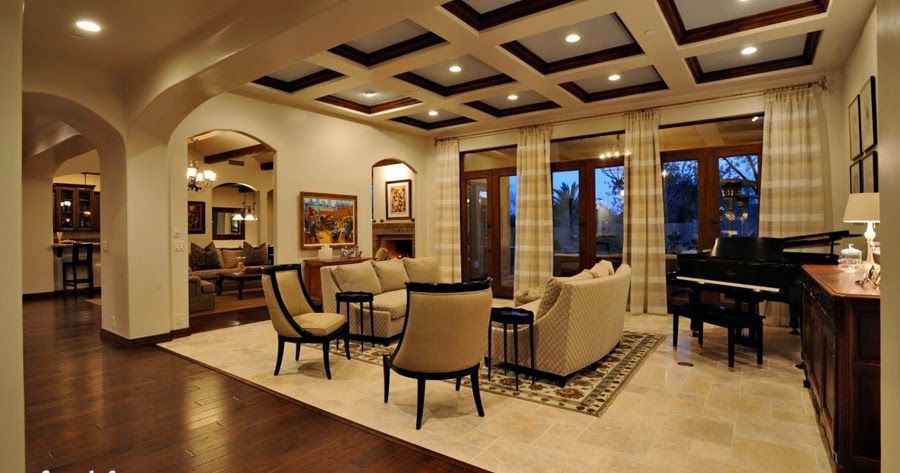
Functionality and Lighting
Office false ceilings play a significant role in enhancing the functionality of a commercial space:
Soundproofing: As mentioned earlier, false ceilings can significantly improve acoustics by absorbing sound waves and reducing noise transmission. This is achieved by using sound-absorbing materials like mineral fiber or fabric panels. This layout also helps to set up centralized sound system placement because the malleable and porous nature of the false ceiling helps dampen noise and vibration from sound output.
Thermal insulation: Certain false ceiling materials, like insulated metal panels or wood with a foam core, can help regulate room temperature by providing a layer of insulation. This can contribute to energy savings and improved occupant comfort.
Airflow management: False ceilings can be designed to facilitate efficient airflow by incorporating ventilation systems and diffusers. This ensures proper air circulation and a healthy work environment.
Office false ceilings also play a crucial role in integrating various lighting options to cater to diverse needs and create different ambiences:
- Task lighting: Focused lighting directed at work surfaces, typically achieved using recessed downlights, track lights, or pendant lights.
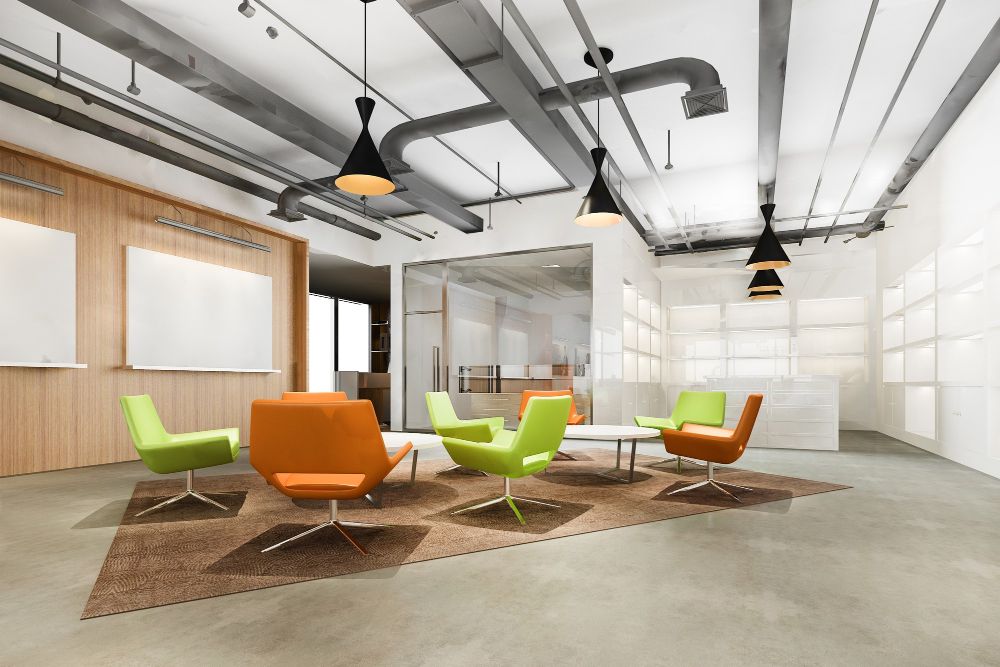
Ambient lighting: General illumination that fills the space with a comfortable level of light, often provided by fluorescent lights or LED panels.
Accent lighting: Used to highlight specific areas or features, creating visual interest and enhancing the overall design scheme. This can be achieved using spotlights, wall sconces, or cove lighting.
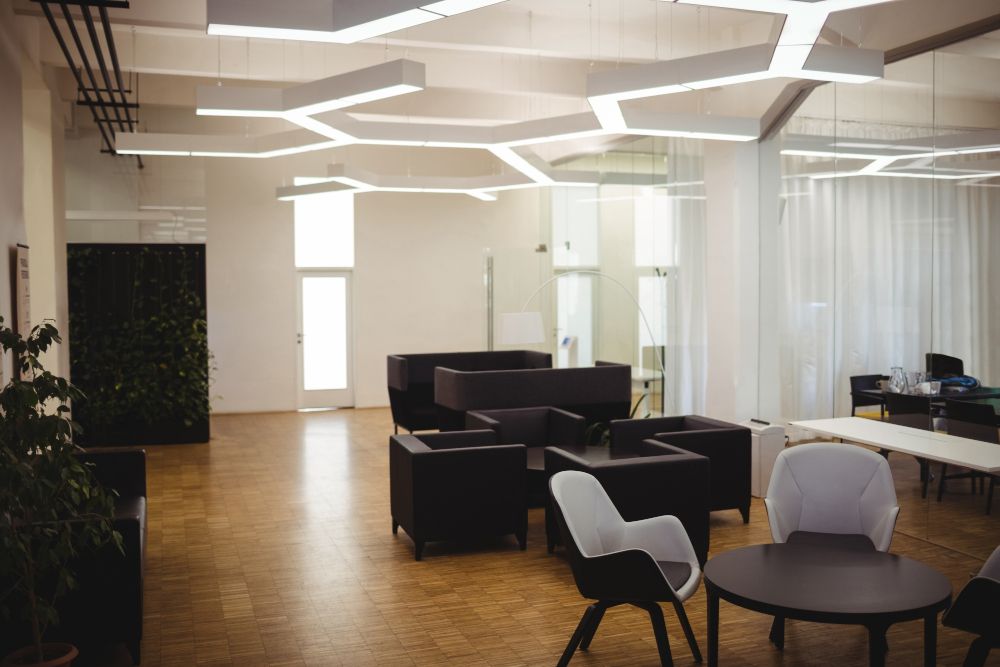
Case Studies
Here are a few case studies showcasing how efficient office false ceiling design can be used implemented in various spaces of a commercial setting:
Case Study 1: Recording Studios
Sound isolation is the word of the hour in a recording studio. This is done by not having any flat surfaces that cause echo and reverberations from the internal noises. This is achieved by prioritizing functionality over form and using coarse and porous material in place of conventional materials, such as curtains, wood panels and especially false ceilings made from softer materials and breaking up any flat surfaces in a space.

Case Study 2: Imaging Clinics
An X-Ray clinic takes advantage of false ceilings more than any other commercial setting. In order to shield the outside from radiation, precautions need to be taken. This is done so by integrating lead into the walls of the structure.
Lead also needs to be covered to avoid corrosion and atomization into harmful particulate matter and needs to be covered up with soft material. This is achieved by using false ceilings that are hollow but reinforced enough to accommodate lead lining.
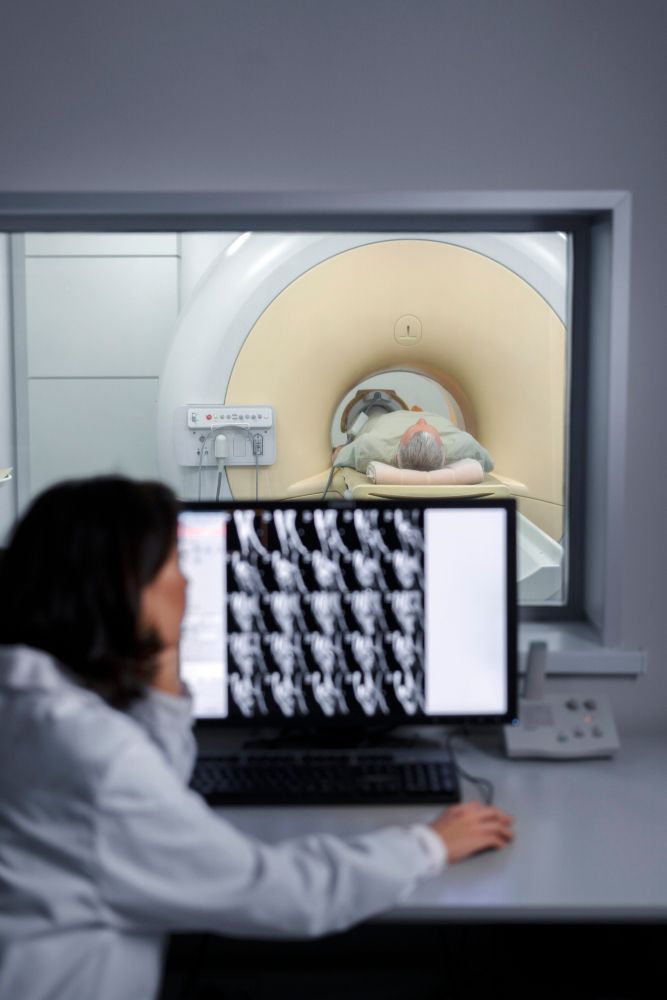
A similar application can be found in MRI clinics, where the outside world needs to be shielded from the high decibel sounds of the MRI chamber. False ceiling and acoustic paneling during construction can help with these issues, to the point of complete sound isolation.
Case Study 3: Photography Studios
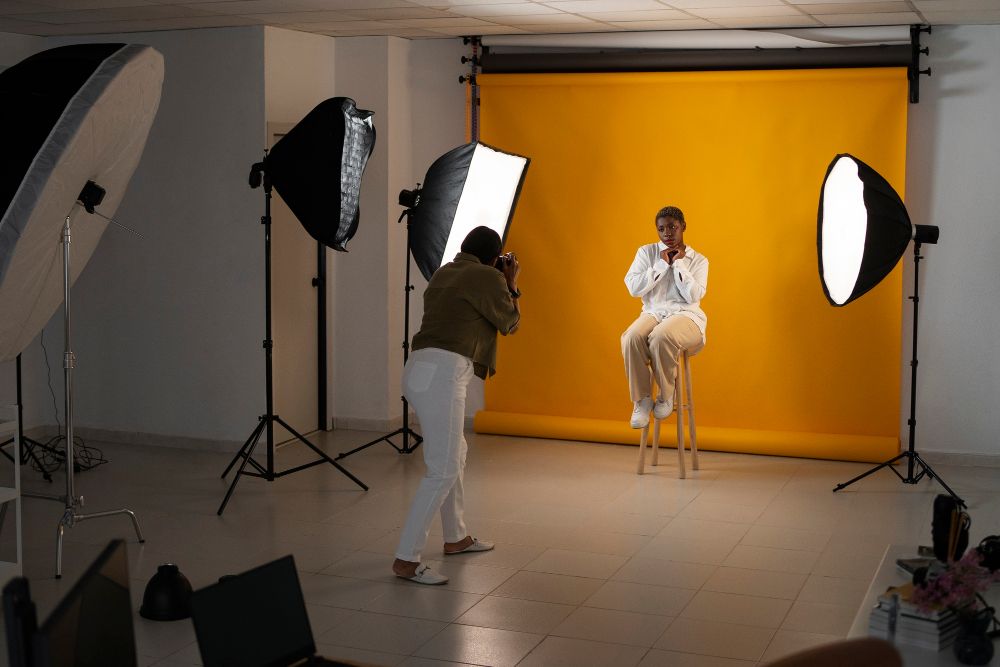
Photography studios thrive on dynamic lighting. Studio lights are one thing but for artistic projects, concentrated lighting is not enough. Photographers often integrate dynamic ambient lighting into their studios, which are either on dimmers or are LEDs concealed artfully inside false ceilings. For the editors who share the space, this kind of lighting can help to create zones of isolation for them to work in.
Conclusion
False ceilings offer a versatile and functional solution to enhance the aesthetics, functionality, and overall well-being within an office space. By carefully considering factors like materials, styles, lighting integration, and desired functionality, designers can create office environments that are not only visually appealing but also support productivity, comfort, and well-being for occupants.
Remember, thoughtful design is crucial when incorporating false ceilings into your office space. Consider consulting with a professional interior designer to explore the various options and create a solution that aligns with your specific needs and aesthetic preferences.
